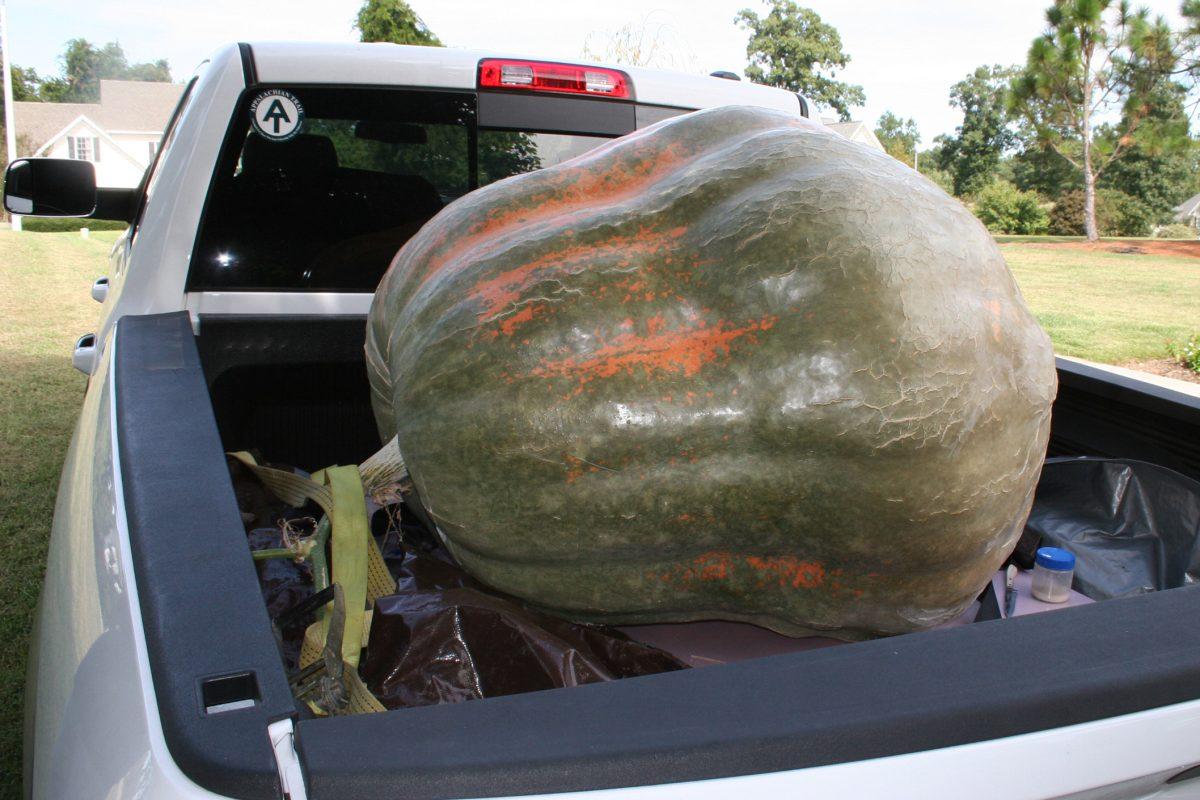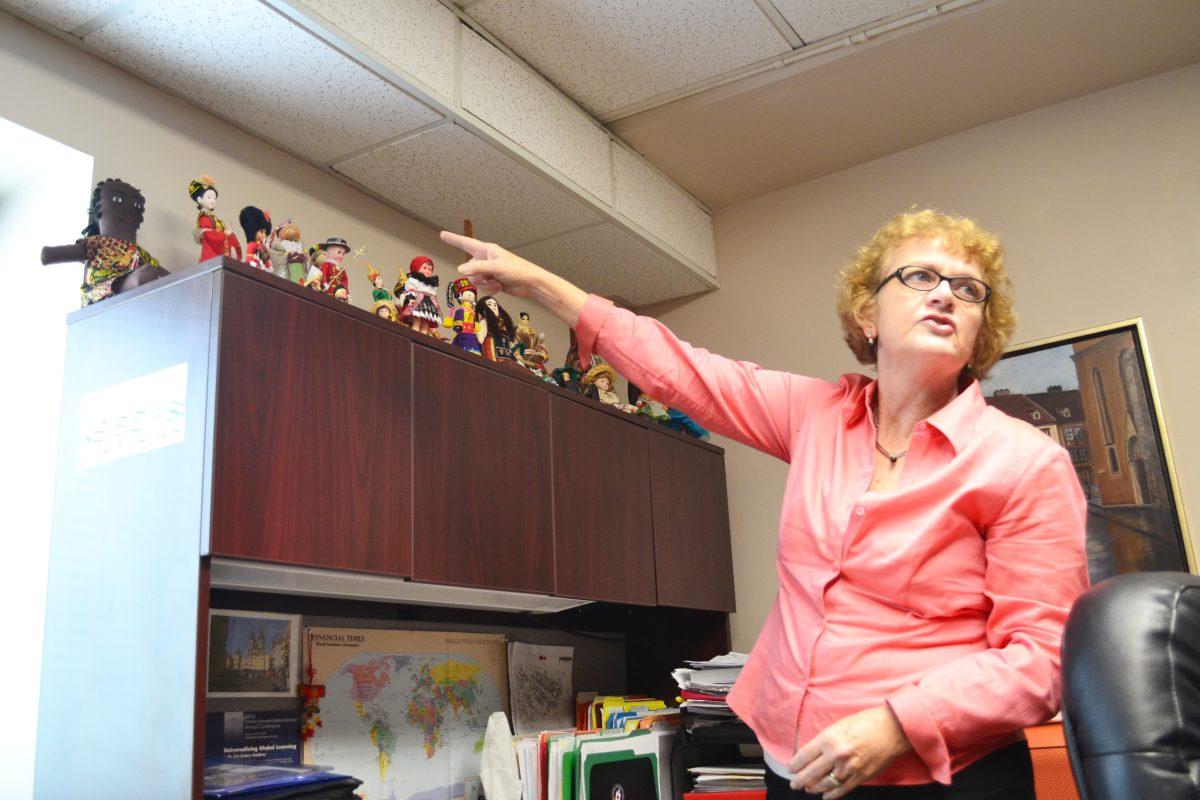Jack Bacheler, an extension entomologist professor at N.C. State, grew a pumpkin for the State Fair in October. He checked on this pumpkin every day and invested a lot of hours in shaping its growth. But this was not your typical neighborhood stoop pumpkin; it weighed 799.6 lbs., earning Bacheler the rightful title of Pumpkin King at this year’s North Carolina State Fair.
Though Bacheler won the Pumpkin King title, he said he is new to the pumpkin growing game.
“I’m pretty much a rookie, so this is year three,” Bacheler said. “For two years, my vegetables were eaten by groundhogs, so that can be a problem. Obviously, it was for me.”
According to Bacheler, on the third year, he altered his strategy allowing him to grow the pumpkin to its full potential.
“For year three I used those silt fences you see around construction sites, it’s like welded wire about three feet high,” Bacheler said. “It was just a matter of putting one of those around the whole thing and then sinking the fence into the ground about six inches or so to keep the groundhogs out.”
Bacheler first started growing pumpkins through a family competition, which grew into a tradition.
“My brother lives in Michigan, a pretty good place for growing pumpkins,” Bacheler said. “And in 2011, he grew a pumpkin 300 pounds, which, by our standards then, was really huge, so we kind of had a family contest.”
Bacheler said that after the competition commenced, he did some research on his own.
“In my own case, I started studying quite a lot,” Bacheler said. “I bought some DVD’s and studied up. With pumpkin growers, there is a pretty big group, and about a third of them like to post everything they do online with pictures and stuff, so after a while you get a pretty good appreciation for what the really top-notch growers do.”
Bacheler shared some of his knowledge regarding how exactly the competition pumpkins grow to the size that they do.
“Well, you can’t plant a seed and come back and have it be huge, I mean that would be great if something like that could happen but it just can’t,” Bacheler said. “So one thing you do is that you get good genetics.”
Bacheler said good genetics means that both of the pumpkin’s parents grew to be a larger size than your average pumpkin patch pumpkin.
“So one of the parents of this pumpkin was a little over 1,500 lbs,” Bacheler said. “The male pollinator and the female pollinator that produced that pumpkin were each about 1,800 pounds, and, at the time, that was just under the world record.”
Bacheler’s pumpkin’s genetics coupled with some of his tender love and care created the pumpkin that took the win.
“First of all, it had good genetics, and then beyond that I think that it is a matter of protecting the pumpkin, most of the time is oddly spent in vine management,” Bacheler said. “So wherever there is a leaf that sprouts up, there is a node and then under that node is the soil and if the soil is good you can get a whole bunch of root systems. In the case of a big pumpkin-like man, we had something like over 200 leaves supporting the pumpkin, and each of those leaves was a separate root system so they all help to feed the pumpkin.”
Bacheler continued by explaining how much effort went into growing a pumpkin of this size.
“It sounds kind of extreme, but most of us measure the pumpkins every day or every other day, and there are some measurements that you can take that are correlated with weight gains,” Bacheler said. “Then, beyond that, I think it helps to have raised beds so that helped a lot because we had a lot of rain. With raised beds the water tends to stay in between the beds.”
According to Bacheler, growing a large pumpkin took a lot of time.
“For me that translated into about an hour and a half a day seven days a week without taking a vacation,” Bacheler said. “Every night between 7:30 p.m. – 9 p.m., I would be out there mostly training the vines because they were very delicate. They have been bred for size so they are susceptible to a lot of bad things.”
Bacheler started growing the plants indoors, moved them outside in late May and pollinated them late June. The pumpkins took about 90 days to grow, according to Bacheler.
“Once they get pretty big, you are kind of hanging on for a weigh off because things can happen like one pumpkin I had that a mouse chewed a hole in,” Bacheler said. “Most of us will put the pumpkin on a sheet of four by four exterior ply wood like I did, then you put mill fabric on top of that, and then about two inches of sand on top of that to get the pumpkins up and out of trouble.”
Bacheler said not much happens with pumpkins following the competition, as they tend to have short lifespans.
As for competing next year, Bacheler said he had a change of heart from his previous decision of ceasing competing.
“The odds of me doing this again were slight, so I had bought blueberry bushes and some grape vines for my backyard and I was going to convert this area to something that would be a little bit easier to do,” Bacheler said. “So I sent in a check for the order, and then I thought about it and thought about it, and the pull toward pumpkins was so much that I cancelled the order and decided to try to do this again.”
Bacheler explained the thrill of the challenge was too great not to indulge in again.
“It’s one thing to grow a really big pumpkin as a fluke but then you ask yourself ‘Am I decent at this, could you do it again?’” Bacheler said. “So that draw kind of trumped the blueberries and blackberries, which realistically probably would have worked out better, but there is something about the challenge of it all.”





